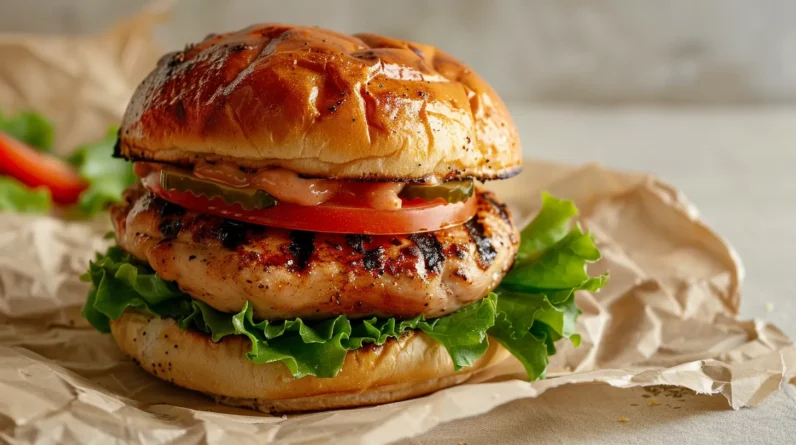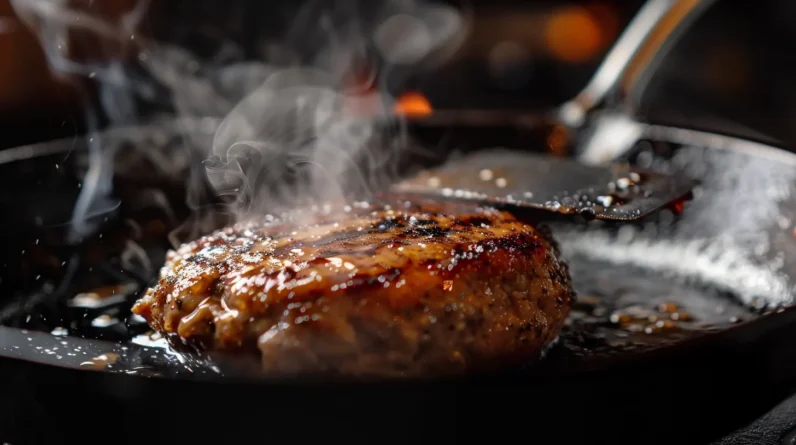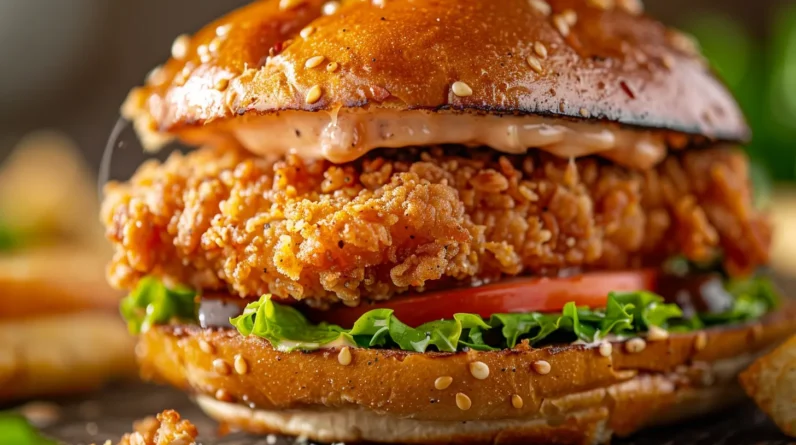
The perfect chicken burger feels like balance because it achieves what excess never can: a democracy of flavors where crispy meets tender, where toppings amplify rather than obscure, and where the bun provides just enough structural integrity to let each bite reveal new dimensions without collapsing into chaos. We’re experiencing synthesis, not compromise—each element earning its position through contribution, creating sensory harmony that transcends the sum of its parts. What follows explores why restraint, not abundance, frees transcendence.
The Goldilocks Principle: Why Chicken Occupies the Middle Ground
When we bite into a chicken burger, we’re tasting equilibrium itself—a protein that doesn’t overwhelm with beef’s iron density nor fade into turkey’s pallid whisper. This is the Goldilocks zone made flesh: substantial yet yielding, assertive without aggression. Chicken tradeoffs reveal themselves in each preparation choice—we sacrifice the self-basting richness of dark meat for breast’s cleaner canvas, or embrace thigh’s unctuous resilience when seeking depth. Cooking methods become philosophical statements: the grill chars ideology into our protein, the pan-sear creates crisp boundaries between interior and exterior worlds, the deep-fryer transforms mundane into rapture through heat and oil. Here, in chicken’s middle ground, we find not compromise but synthesis—the burger that neither dominates our palate nor disappears beneath condiments, but holds its center with quiet authority.
Texture as the Foundation: Crispy Meets Tender
The dialectic between crispy and tender doesn’t merely please—it awakens something primal in our eating consciousness. Food texture creates sensory experience that transcends taste alone. When we bite through a shattering crust into yielding chicken, we’re experiencing architectural perfection: resistance yielding to softness, protection giving way to vulnerability.
This textural conversation matters because our mouths crave complexity:
- The audible crack of breading announces what’s coming
- Heat-sealed juices flood across our tongue mid-bite
- Crisp edges dissolve into tender meat seamlessly
- Each chew reveals new textural dimensions
- The contrast creates physical satisfaction taste can’t achieve alone
We don’t just eat this burger—we conduct a sensory investigation. The interplay between surfaces teaches us that balance isn’t compromise. It’s synthesis.
The Supporting Cast: When Toppings Know Their Place
Lettuce, tomato, pickles—these aren’t mere garnishes waiting to justify their presence. They’re structural elements demanding proper topping ratio. We’re pursuing filling balance where each component amplifies rather than obscures.
| Element | Role | Precision Point |
|---|---|---|
| Lettuce | Textural barrier | Crisp, never wilted |
| Tomato | Acidity counterweight | Thin-sliced, seeds removed |
| Pickle | Sharp punctuation | Strategic placement, not saturation |
When toppings know their place, they create dialogue with the protein. That pickle brine cutting through rich mayo. Tomato’s brightness elevating seasoned chicken. Lettuce providing the snap that announces: this burger respects architecture.
We’re not layering ingredients—we’re composing balance. Each addition must earn its position through contribution, not convention. Excess destroys what restraint perfects.
Bun Integrity: The Unsung Structural Hero
All that careful composition collapses without foundation. The bun isn’t mere packaging—it’s architecture. We’re talking bun chemistry: gluten networks that create fiber structure capable of withstanding moisture assault while maintaining tenderness. A proper bun compresses slightly under bite pressure, then springs back, creating textural counterpoint to the chicken’s crisp exterior.
Consider what structural integrity delivers:
- The satisfying resistance when your teeth first press down
- Steam rising from a fresh-split crown, yeasty and warm
- That vital barrier preventing soggy disintegration mid-bite
- The way toasted interior surfaces resist sauce penetration
- Clean breaks that hold together until the final moment
Master bakers understand this balance instinctively. We must demand the same. Without it, every other element fails.
Flavor Harmony Over Flavor Dominance
True greatness emerges when no single element screams for attention. We’ve all encountered burgers where sweetness overwhelms, where heat obliterates, where richness drowns every nuance. The perfect chicken burger rejects this tyranny. Instead, it cultivates flavor balance—a democracy where crisp lettuce tempers fatty mayonnaise, where pickle brine cuts through breading’s richness, where tomato’s acidity brightens seasoned meat.
This isn’t compromise; it’s taste synergy. Each component amplifies others while maintaining distinct character. The chicken remains central but never domineering. Condiments enhance rather than mask. We taste layers unfolding sequentially, then harmonizing into something greater than their sum.
Mastery lies in orchestration, not volume. We’re building conversation between ingredients, not staging solo performances. That subtle restraint? That’s where transcendence lives.
The Calibration Mindset: Restraint as a Culinary Virtue
Restraint demands more courage than excess. When we pull back the layers of sauce, thin the blanket of cheese, we’re not diminishing—we’re revealing. Our calibration techniques become acts of respect for each element: the charred crust, the herb-flecked meat, the crisp lettuce that snaps audibly. These balance strategies aren’t limitations; they’re frameworks for clarity.
Consider what restraint protects:
- The delicate crunch of pickle against soft bun
- Salt’s bright edge before it crosses into metallic assault
- Chicken’s inherent sweetness, unmarred by competing sugars
- The breath between bites where flavors resolve and reset
- Space for texture to speak as loudly as taste
We’re not withholding pleasure. We’re amplifying it through precision, creating room for every sensation to register fully, distinctly, memorably.
What “Just Right” Teaches Us About Satisfaction
When we finally land on “just right,” satisfaction arrives not as thunder but as recognition—a quiet click where effort meets inevitability. Balance theory suggests we’re measuring satisfaction metrics against an internal template, sensing completion through coherence rather than abundance.
| Excess State | Just Right State |
|---|---|
| Dulled palate | Engaged senses |
| Diminishing returns | Sustained pleasure |
| Post-meal regret | Post-meal contentment |
| Flavor blur | Flavor clarity |
| Heaviness | Lightness |
The perfect chicken burger teaches restraint’s reward: we’ve calibrated ingredients until they disappear into unified experience. No single element dominates. The bun yields without dissolving. The chicken remains present without overwhelming. Each bite renews interest rather than exhausting it. This isn’t deprivation—it’s precision that transforms eating into dialogue between anticipation and delivery.
Conclusion
We’ve chased excess like it’s enlightenment, piling bacon on bacon until we’ve forgotten what we’re actually tasting. But here’s the radical truth: that perfect chicken burger—crispy skin yielding to tender meat, cool lettuce against warm bun—whispers something our dopamine-soaked palates have forgotten. Balance isn’t boring; it’s the only sensation that actually resonates. Perhaps we’ve confused maximalism with meaning all along. Perhaps “just right” was always the point.







